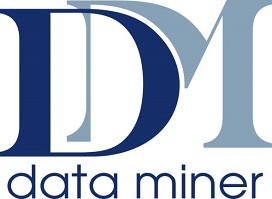About this course
Power BI Desktop is part of the suite of tools from Microsoft which enable data to be analysed and published from a variety of sources.
With Power BI Desktop, you get a report authoring tool that enables you to connect to and query data from different sources using the Query Editor. From the datasets you build with Query Editor you can create Reports and Visualizations or dashboards within Power BI Desktop. Reports can then be published.
This course covers the use of Power BI Desktop to connect to data, create Visualizations, query the data and publish reports.
Please Note: This course does not cover Power BI Pro, Power BI accessed via Office 365 or SharePoint Services.
Audience profile
Anyone who is familiar with Microsoft Office applications and who needs to work with data to be able to connect, process and analyse the data to produce suitable output at all levels within an organisation.
It is assumed that attendees on the course are already familiar with charts and PivotTable concepts.
At course completion
- Power BI Desktop Concepts and Main Features
- Data Sources compatible with Power BI Desktop
- Connecting to Data with Power BI Desktop
- Explore Data Visualizations
- Apply Common Query Tasks to Shape Data in Power BI Desktop
- Create and publish Reports
Lesson 1: Getting Started with Power BI Desktop
- Power BI Concepts and Overview
- Introduction to Main Features
- Imports
- Visualizations
- Filters and Queries
- Reports
Lesson 2: Connecting to Data Sources with Power BI Desktop
- Data Sources Power BI Desktop will connect to
- Data Types and Properties in Power BI Desktop
- Import and Enter Data
- Get Data and Query Editor
- Introducing the Query Editor
- Using the Query Editor to Connect to Data
- Combining Data Sources as a Mash Up
- Use Append Queries
- Merge Data Tables
- Working with Relationships in Data
Lesson 3: Querying and Shaping the Data
- Activities using Query Editor
- Filters
- Clean, Trim, Format and Replace
- Split Column or Extract Using Delimiters
- Column from Example
- UnPivot
- Creating Custom Calculated Columns
- Adding Conditional Columns
- Introduction to DAX Expressions
- Histograms
Lesson 4: Data Visualizations
- Overview of Data Visualizations
- Tables and Matrix Views
- Applying Conditional Formats
- Charts
- Types
- Options
- Interactive Slicers
- Date Slicers – dropdowns and searches
- Number Slicers with value ranges
- Date Slicers with Relative filters
- Drill Visualizations to see underlying data
- Create Reusable Field Hierarchies
- Record Grouping and Binning in Visualizations
- Analytics Lines in Visualizations
- Forecast
- Create Measures
- Create a KPI Visualization
- Drill Visualizations to see underlying Data
- See Records
- Date Hierarchies
- Quick Measures
- Clustering
- Data Categories, Geo-Data and Maps
Lesson 5: Reports and Output Options
- Report Elements and Options
- Working with Pages
- Visual and Filter Settings
- Edit Interactions
- Bookmarks
- Report Themes
- Buttons and Q&A
- Export Power BI Data to CSV
- Create a Power BI Template
QA reserves the right to improve the specification and format of its courses for the benefit of its customers without notice to the customer.
- Please note that this course is not suitable for new Excel or database users
- An understanding of basic data concepts
- Ability to create, format chart outputs
- Be able to create formulas using standard aggregate functions
- Attendance on the QA courses Microsoft Excel 2013 Data Analysis and Power Tools Part 1, Microsoft Excel 2013 Data Analysis and Power Tools Part 2, Microsoft Excel 2016 Data Analysis and Power Tools Part 1, Microsoft Excel 2016 Data Analysis and Power Tools Part 2 or equivalent knowledge is a prerequisite for this course
Dual monitor setup is required for when attending this course via the QA Attend from Anywhere delivery method.
| Pradžios data | Trukmė, d. | Kurso pavadinimas | Kaina, € | Statusas |
| Užklausti | 3 | Power BI Desktop for Business Users (nuotolinė klasė - ENG) | € 1,200 | |
| Užklausti | 1 | Micrsoft Power BI Reports and Dashboards for Business Users (nuotolinė klasė - ENG) | € 900 | |
| Užklausti | 2 | Power BI Desktop for Technical Users (nuotolinė klasė - ENG) | € 1,100 | |
| Užklausti | 3 | Microsoft Power BI Data Analyst | € 1,200 | |
| Užklausti | 4 | Microsoft Power BI Data Analyst (nuotolinė klasė - ENG) | € 1,400 | |
| Užklausti | 4 | Designing and Implementing Enterprise-Scale Analytics Solutions Using Microsoft Azure and Microsoft Power BI | € 1,400 |

